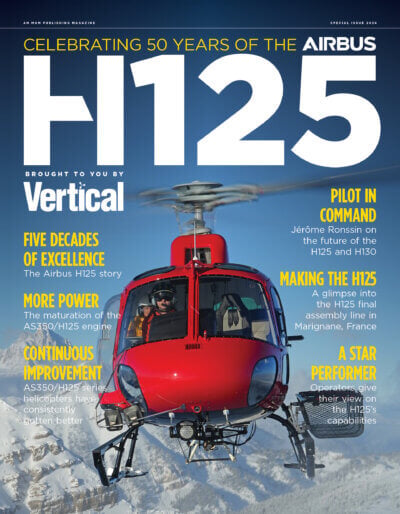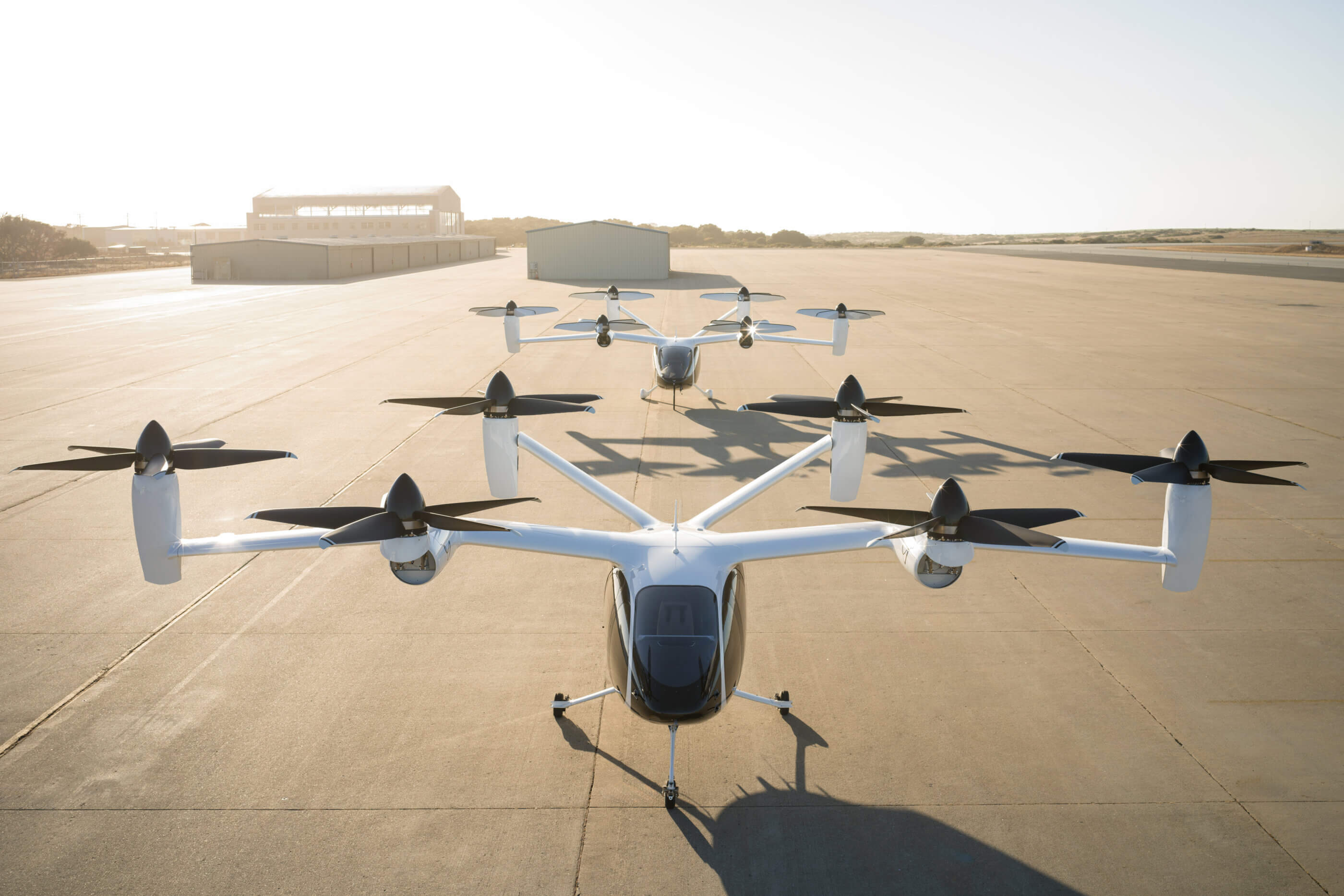To swap or not to swap. When it comes to battery technology, this is a question that’s already been answered by most eVTOL developers.
While both swapping and quick charging have their merits, the vast majority of companies have gone with quick charging due to factors like customer preference and logistic simplicity. Charging avoids the labor required with swapping, along with battery storage space and the need to comply with storage regulations.
SkyDrive of Japan is using quick charging on its eVTOLs for reasons, such as “the overall cost for development, as well as for the operation including infrastructure,” said public relations manager Yoshimi Yamamoto. “Also, we believe that using a quick charging strategy can reduce the total aircraft structural weight.”
In November 2023, SkyDrive and Kansai Electric Power Company announced a collaboration on eVTOL charging facilities in preparation for the 2025 World Expo in Osaka, Japan.
Add all this to the fact that fast charging is already very fast indeed, able to finish while passengers or payload are unloaded/loaded and required checks are completed.
Beta Technologies, for example, has created a system that will recharge its Alia-250 aircraft in under an hour. It’s an interoperable and multimodal fast-charging system for any eVTOL, which employs the Combined Charging System already used by the electric aviation industry. In November, Beta and Archer Aviation announced that Archer has purchased several of Beta’s units to use on its Midnight eVTOL aircraft.
Beta’s charging systems are already in use at several locations across the eastern U.S., including the Eglin Air Force Base. The units purchased by Archer are located at its development site in Salinas, California.
In addition to supporting electric aviation, the Beta systems can also charge electric ground vehicles. Beta has therefore placed multiple units at nearly all charging sites in order to service both aircraft and vehicles. In fact, Beta reports that in places like Springfield, Ohio, “cars are lining up” to use its chargers because they are the fastest in the region.
Of the Beta/Archer collaboration, Pete Bunce, president and CEO of the General Aviation Manufacturers Association (GAMA), stated in a press release that enabling electric aircraft and electric ground vehicles from different manufacturers to share charging infrastructure will help reduce the costs of electrifying existing aircraft infrastructure.
He added that “a common standard will boost confidence in the emerging advanced air mobility sector of our industry.”
Other benefits of shared charging, compared to the model of multiple proprietary charging systems, are described in a GAMA report released in September titled Interoperability of Electric Charging Infrastructure.
For its part, Archer stated that gaining access to Beta’s charging systems and network is a critical component in its plans to “create the most efficient and scalable path to market.”
Joby’s universal charging
Joby has also created a universal charging interface for quick charging, the result of 10 years of research and development. In November, the company announced it would make the specifications freely available to the eVTOL industry.
The company is also working toward the creation of a universal fast-charging standard that can form the foundation of electric aviation operations around the world. Joby’s charging technology is already in use at its flight test center in Marina, California, and at Edwards Air Force Base, also in California.
The move to create a universal charging system and share the specs, explained a company representative to Vertical, aligns with Joby’s “number one” goal — to make sustainable air travel as widely available as possible and “to make the transition to clean flight as rapid as possible.”
Joby’s system is different from others under development, the company claims, because it’s expected to offer a lower certification burden and also supports all types of electric aircraft under development, from short-range eVTOLs to electric aircraft flying longer distances (using multiple independent battery packs). It features integrated battery conditioning and secure, high-speed data offload expected to meet the safety and cybersecurity requirements of the Federal Aviation Administration (FAA).
“For 95 percent of the trips taken today across key markets like New York City, we’re able to recharge the aircraft in less time than we expect it to take to unload and load passengers and baggage, meaning we don’t see charge time being a barrier to performing back-to-back flights for the vast majority of our early target routes,” said the Joby representative. “We’ve demonstrated this rapid charge capability in flight testing at Marina, California, where we’ve hosted two contingents of U.S. Marines and demonstrated the ability of our aircraft to perform back-to-back flights with minimal turnaround time.”
Battery swapping
While battery swapping is costly in terms of the storage and management infrastructure required — and some would say only feasible on a widescale with uniform battery systems used in every eVTOL model — this method still offers some advantages.
In jurisdictions with time-of-use differences in electricity costs, batteries being readied for swapping can be charged when electricity costs are lower.
Battery life is also potentially much longer with swapping. There are some reports that when ambient temperatures are high, fast charging of batteries can lead to degradation, where swapped batteries can be charged more slowly and stored at lower temperatures.
Battery health is one reason behind Volocopter’s decision to use swapping, at least at first. In a blog post from July 2023, the company stated that “initially, our focus will be on battery swapping, a concept that offers a host of possibilities for considerably extending battery lifetime.”
There is also some industry talk that there may be a requirement in the future in the U.S. to have a certified airframe management technician “sign off” on an eVTOL aircraft after every swap. However, several industry experts couldn’t confirm how seriously this is being considered, if truly at all.
Swap or fast charge: Amprius is ready
Amprius batteries are suited to both eVTOL quick-charging or swapping, explained chief technology officer Dr. Ionel Stefan, due to offering “extreme fast charge” capability and low weight.
“The typical commercial batteries for eVTOL are similar to those used by electric vehicle [EV] OEMs [original equipment manufacturers] and can be charged in comparable times of 30 to 60 minutes in fast charge mode to 80 percent or over many hours in normal charging mode,” Stefan said. “Amprius’ high-energy density cells [400 Wh/kg versus commercially-available 250 Wh/kg] can be charged in six minutes to 80 percent and in 15 minutes to 100 percent.”
As there’s a wide variety of designs (and target ranges) among eVTOL models, it’s not easy to generalize about how many Amprius batteries would be needed for a typical mid-sized four- to six-person eVTOL. However, Stefan noted that required battery capacity for that size of eVTOL could be in the 200 kWh range. He added that for this power requirement, high energy density batteries with lower weight, such as those made by Amprius, are essential because they increase payload capacity and range while decreasing costs, reducing energy consumption during operation.
In October 2023, Amprius announced an order had been placed from an eVTOL developer for custom silicon anode cells.
“We can’t disclose the customer’s name at this time, but it’s known in the industry,” Stefan said. “We are also engaged with numerous other eVTOL customers supporting their flight qualification objectives.”





